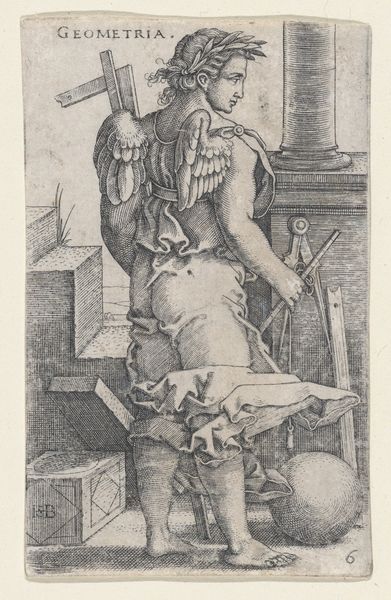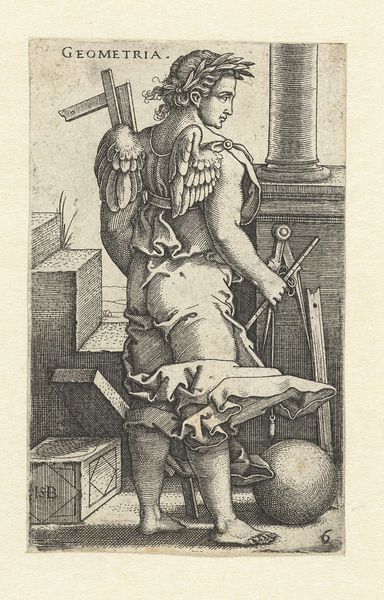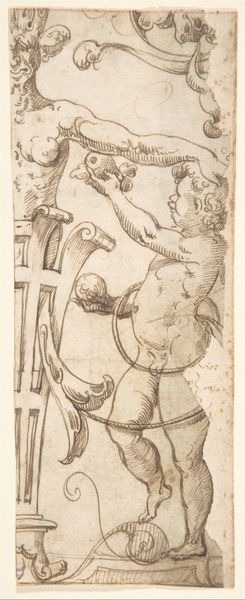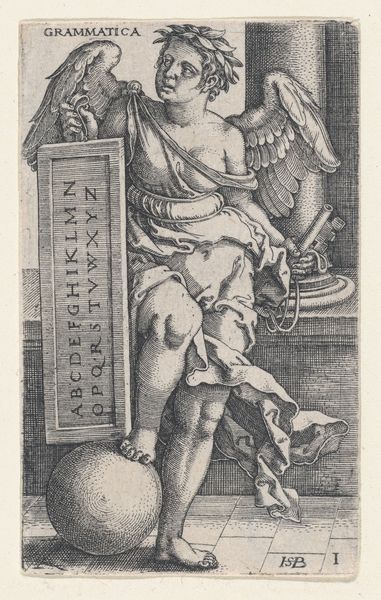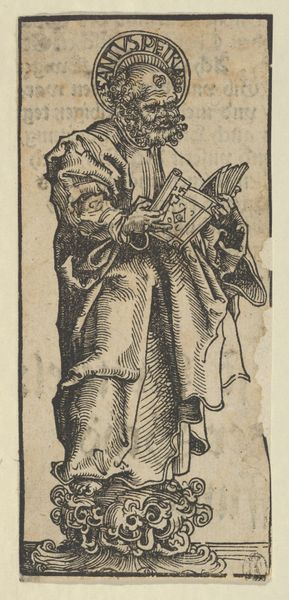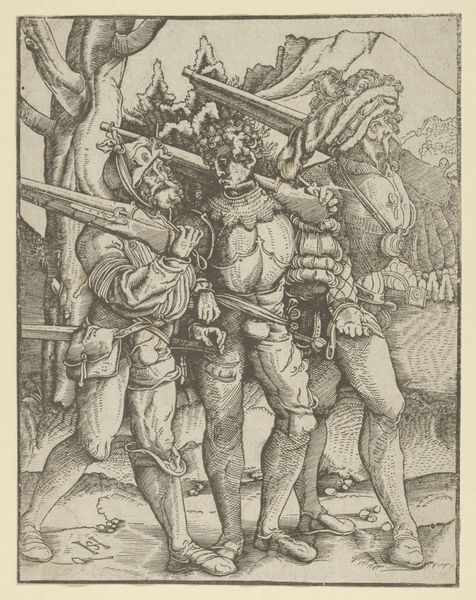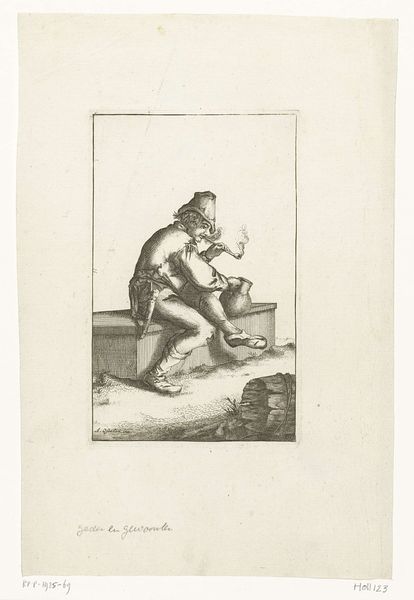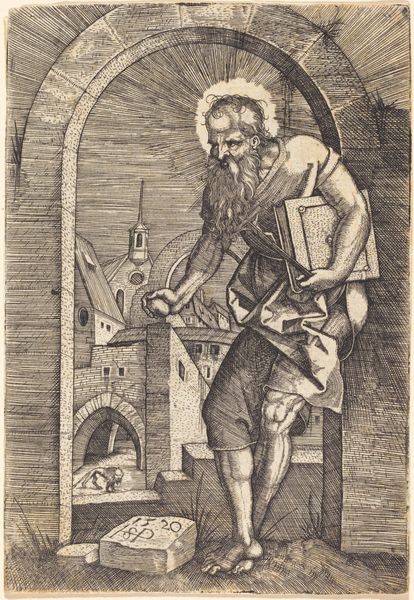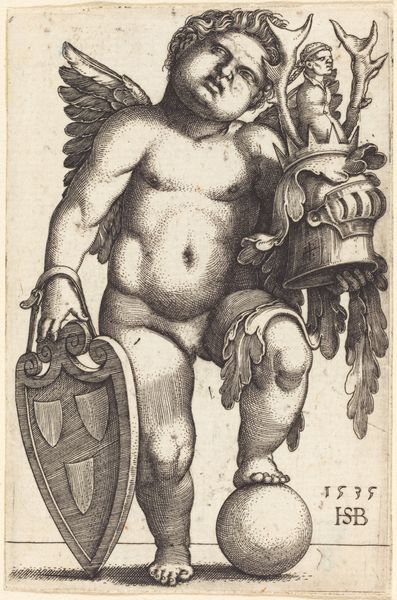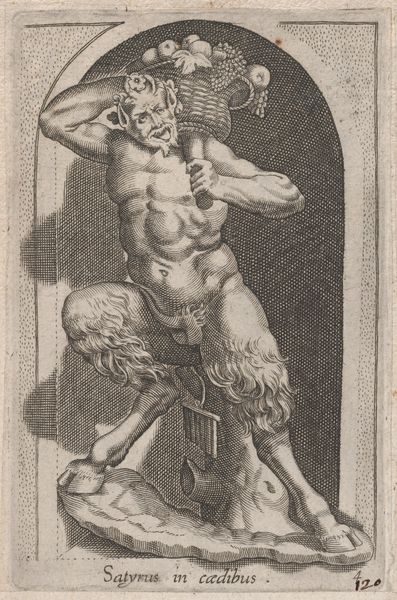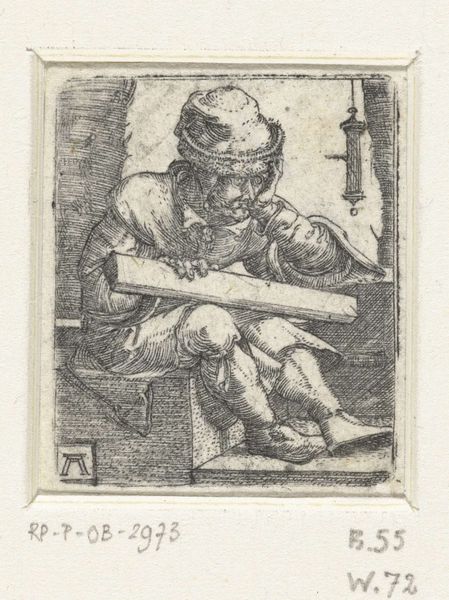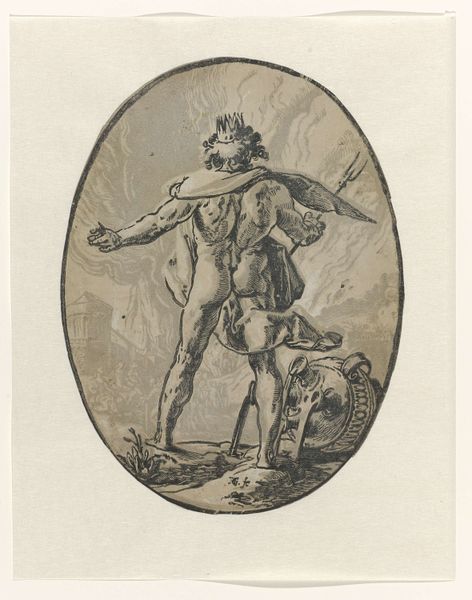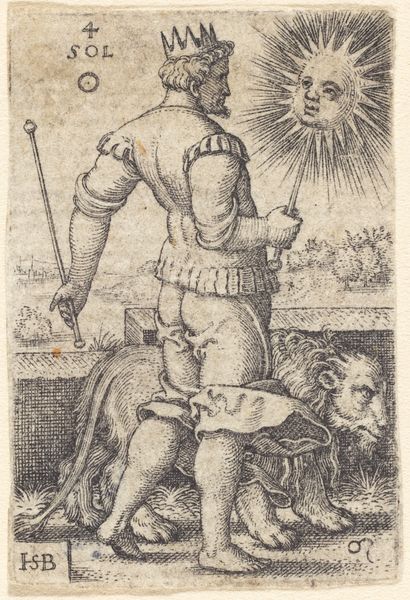
drawing, print, engraving
#
drawing
#
allegory
# print
#
figuration
#
northern-renaissance
#
engraving
Dimensions: Sheet: 3 7/8 x 2 1/2 in. (9.8 x 6.4 cm)
Copyright: Public Domain
Curator: Looking at this print, it's striking how tactile everything appears despite being rendered in such a controlled medium as engraving. Editor: The artwork we’re looking at is “Geometria, from ‘The Seven Liberal Arts’," dating back to 1500-1550, and was created by Sebald Beham. I think there is a melancholic, almost reluctant air about her stance, don't you agree? Her gaze drifts past us into the beyond... Curator: I think the rendering of the textures - the feathered wings and hair, versus the polished stone of the column and her tools are the result of very purposeful choices related to the labor that goes into crafting each one. Note how meticulously he depicts her holding compasses as well as what might be a ruler. The geometric designs aren't just abstract notions here. Editor: Absolutely. We have to place this piece within its broader socio-political framework of its time and the rediscovery of the self. I find the figure, personifying "Geometry", striking for her decidedly non-idealized body and decidedly ambiguous gender. It seems to deliberately challenge any strict binaries that we expect during the Renaissance! Curator: That said, if we look at the actual labor involved in *creating* this artwork; the print-making process itself... there are sociopolitical layers embedded here. How can we examine the material, artistic methods to reveal biases in production, labor and craft? I think the level of detailing points to the artisanal labor Beham's studio provided and I don't want that flattened. Editor: It’s fascinating how Beham uses this image of Geometria, surrounded by her instruments of knowledge to also embody the tensions and contradictions of Renaissance society itself. A new humanism and new forms of exploration emerged while strict constraints based on gender were ever-present. Curator: Indeed. Ultimately, it's this friction between the very controlled tools used by both subject *and* artist and what's going on compositionally that leaves such a lasting impression on the viewer. Editor: I think I come away reminded of the struggle for both mastery and equality, in the face of both imposed rules, whether geometric or societal, to pursue creation in its purest form.
Comments
No comments
Be the first to comment and join the conversation on the ultimate creative platform.
